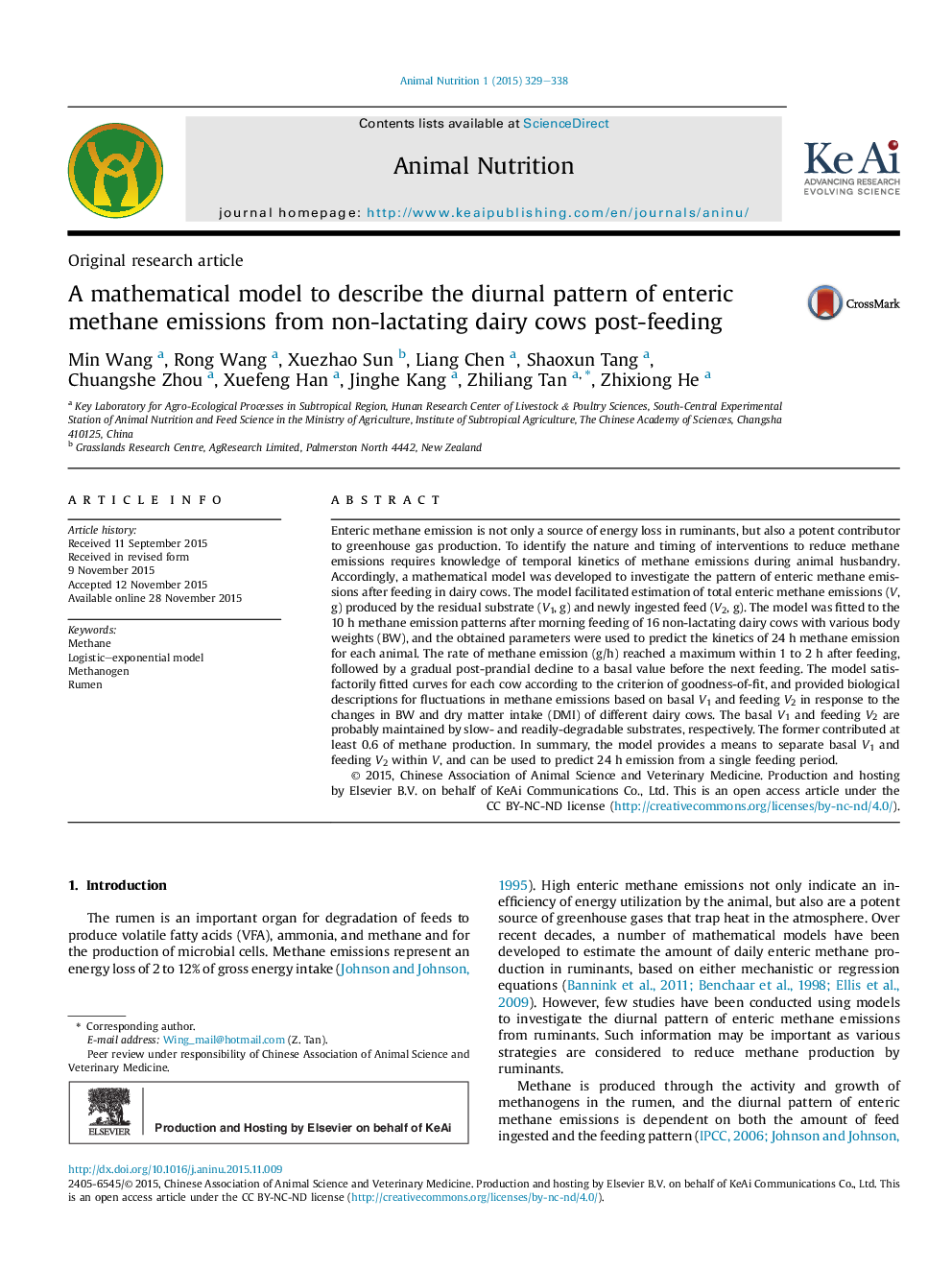| کد مقاله | کد نشریه | سال انتشار | مقاله انگلیسی | نسخه تمام متن |
|---|---|---|---|---|
| 4522304 | 1323167 | 2015 | 10 صفحه PDF | دانلود رایگان |
Enteric methane emission is not only a source of energy loss in ruminants, but also a potent contributor to greenhouse gas production. To identify the nature and timing of interventions to reduce methane emissions requires knowledge of temporal kinetics of methane emissions during animal husbandry. Accordingly, a mathematical model was developed to investigate the pattern of enteric methane emissions after feeding in dairy cows. The model facilitated estimation of total enteric methane emissions (V, g) produced by the residual substrate (V1, g) and newly ingested feed (V2, g). The model was fitted to the 10 h methane emission patterns after morning feeding of 16 non-lactating dairy cows with various body weights (BW), and the obtained parameters were used to predict the kinetics of 24 h methane emission for each animal. The rate of methane emission (g/h) reached a maximum within 1 to 2 h after feeding, followed by a gradual post-prandial decline to a basal value before the next feeding. The model satisfactorily fitted curves for each cow according to the criterion of goodness-of-fit, and provided biological descriptions for fluctuations in methane emissions based on basal V1 and feeding V2 in response to the changes in BW and dry matter intake (DMI) of different dairy cows. The basal V1 and feeding V2 are probably maintained by slow- and readily-degradable substrates, respectively. The former contributed at least 0.6 of methane production. In summary, the model provides a means to separate basal V1 and feeding V2 within V, and can be used to predict 24 h emission from a single feeding period.
Journal: Animal Nutrition - Volume 1, Issue 4, December 2015, Pages 329–338
